#māori performing arts
Text
Today is the Finals day of Te Matatini, and if you’re not watching already you should really tune in! Te Matatini is a kapa haka (Māori performing arts) competition in Aotearoa that’s often called the Olympics of Kapa Haka. The performances are absolutely stunning to watch!! As an American who just learned about this event, it’s been really cool to find out more about Māori culture while admiring some absolutely breath-taking art. It’s available to stream live or watch prerecorded on TVNZ or Haka Translate, with live translations in many different languages available! Even if you miss the live finals today, to my knowledge the competition will still be available to stream for a few more days afterwards. Unfortunately those websites are only available to people in Australia or Aotearoa, but with a little bit of stubbornness and a decent VPN you can watch from anywhere. (I’ve been using the free VPN TunnelBear, with the only downside being that every now and then I run out of free data and have to make a new account.) They also have a donation fund set up to help communities affected by Cyclone Gabrielle, so if you want to donate this is a great place to do that!
https://givealittle.co.nz/cause/te-matatini-o-te-aroha
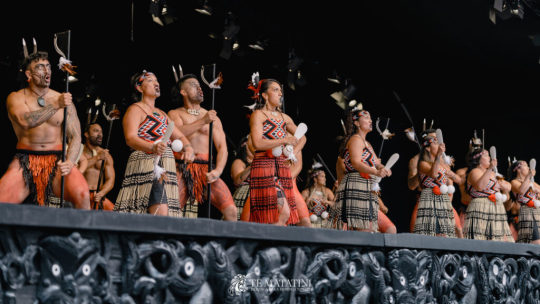
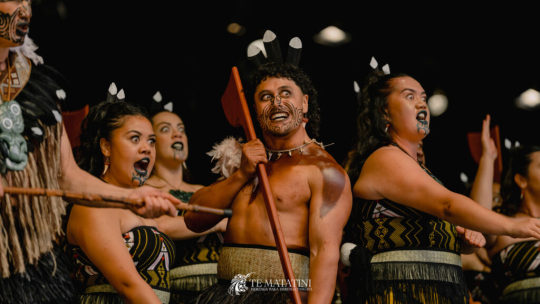
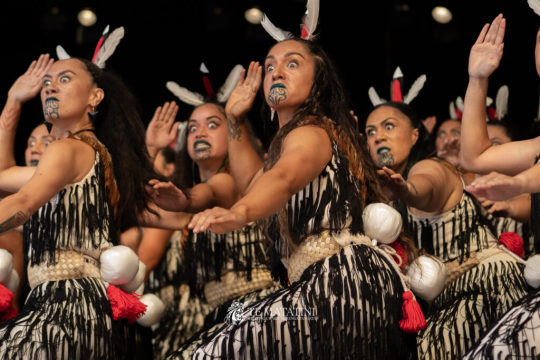

#can’t recommend Te Matatini highly enough!#will definitely be adding it into my rotation of competitions to tune into#te matatini#kapa haka#aotearoa#new zealand#cyclone gabrielle#action item#māori#te ao māori#indigenous#indigenous culture#arts and culture#dance#māori culture#māori performing arts#indigenous performing arts#disaster relief#disaster relief fund#maori#maori culture#maori performing arts#traditional dance#traditional music#music#indigenous music
33 notes
·
View notes
Text
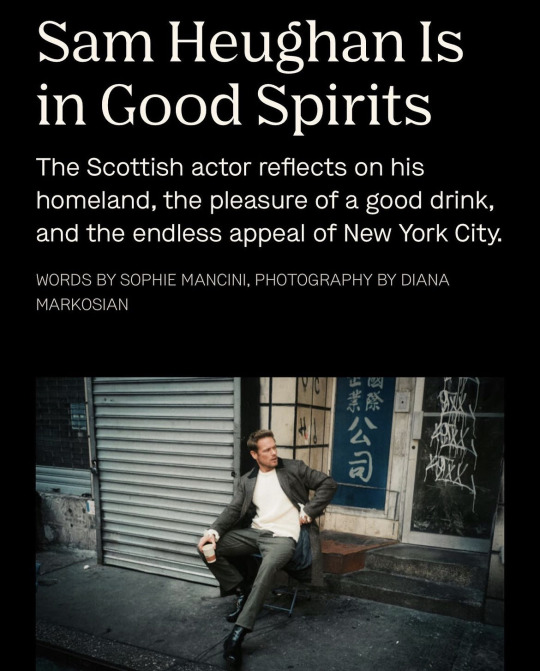

The article was posted on 2 November, he’s a bit late ⏰
He hasn’t learned that talking too much is unnecessary; I suppose enjoying many cocktails during this interview interfered with his coherence. He prefers to be seen for the work he does, rather than how he looks. How can it be different? In real life, the initial thought that attracts him is his looks, instead of showing what he does in his acting career or trying to educate himself. For him, his appearance catches the spotlight and adulation of his fans and becomes his first target. He knows how to take off his shirt, seeking attention, like the peacock that spreads its feathers, revealing a touch of insecurity that he fills with physical training.
He keeps returning to fairy tales because it is a way of hiding his childhood he has not completed to reach adulthood. Likewise, he has a fantasy world, a house in Glasgow, Los Angeles and now thinking about living in New York to satisfy what the interviewer needs to hear (He’ll change the place and he will repeat the same thing). He likes to achieve the narrow goal. Not only that, but he doesn’t know what he wants or needs. He can’t stop looking outside for a place, an item or whatever to fill an emotional void when nowhere does he feel at home.🤷♀️
He said he learned about tā moku, the art of Māori tattooing, and wants to return to New Zealand and get the tattoo next time. But it seems he didn’t learn too much. Although technically it is only Māori who can perform or receive tā moko. The tā moko artist must had the Māori blessing to make tā moko for people, not Māori who in turn had the local iwi’s blessing. This involves living in the culture and absorbing the Māori knowledge and beliefs. You do not receive this while on holiday on a 3-month visa or a week-long trip to Rotorua in New Zealand 🇳🇿 So, SH would be willing to accept and respect Maori demands because he has not set a good example by accepting the rules in the UK or he makes use of it according to his needs.
18 notes
·
View notes
Text

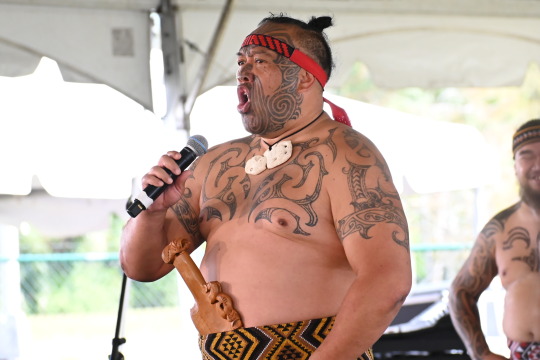


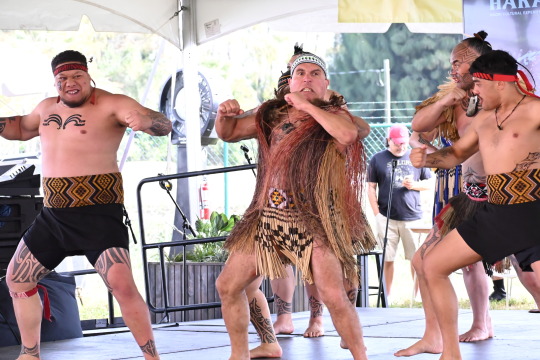
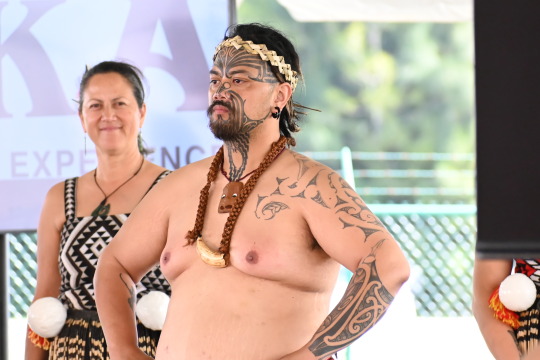
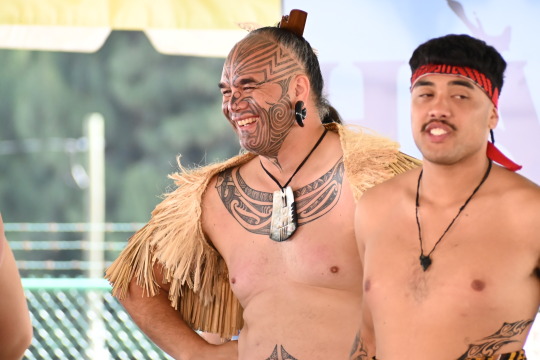

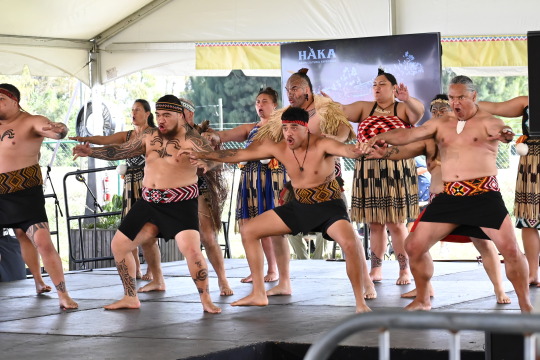

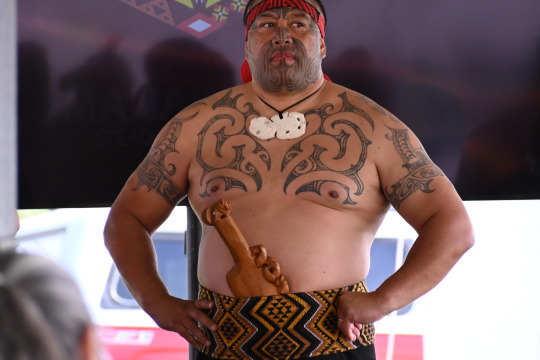
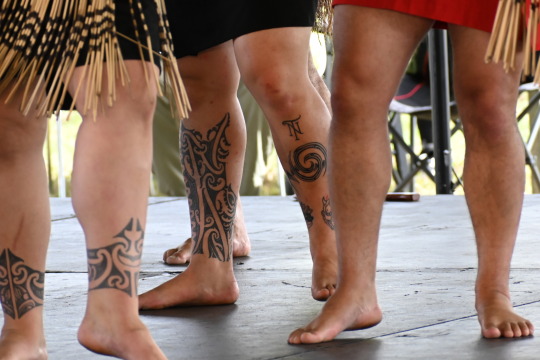

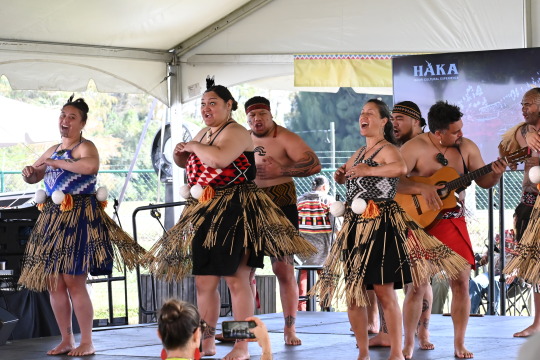
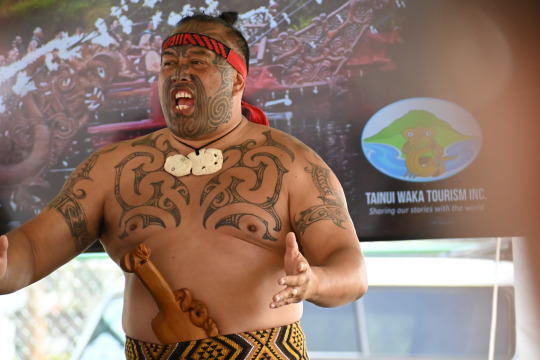



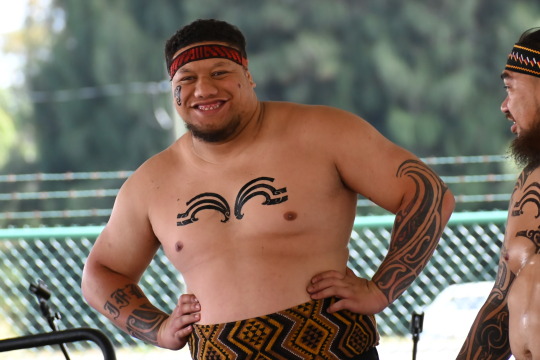

Some photos from a recent Indigenous culture arts festival, which include various performances from HAKA Māori Cultural Experience. My first time witnessing a live haka ceremonial dance; both beautiful and terrifying. Amazing harmony, too. Lovely people.
#writeblr#writing#culture research#haka#maori#maori culture#original photography#indigenous peoples#new zealand#waikato#aotearoa#writing advice#writing tips#fiction writing
7 notes
·
View notes
Text
Whale Rider (2003)
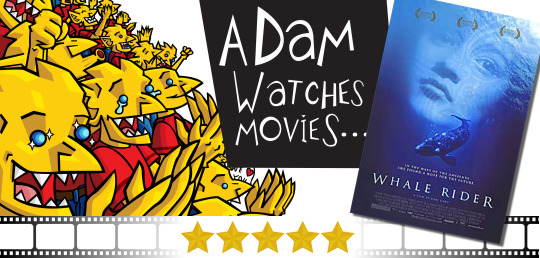
When a film is described as “inspirational”, that can often actually mean cloying or manipulative. Take away the empowering and uplifting message in Whale Rider, and you’ve still got a great movie, largely thanks to the direction by Niki Caro and lead actress, Keisha Castle-Hughes. This is a story of powerful emotions.
In a small New Zealand village, twelve-year-old Paikea “Pai” Apirana (Castle-Hughes) dreams of becoming her tribe’s chief. Unfortunately, her grandfather, Koro (Rawiri Paratene), will not teach her to lead. Undeterred, she begins training in secret.
Though this is very much a film about the Māori people, it has universal appeal. It’s not an opioid crisis, or their land being taken away by some foreign power that’s caused the island's society’s decay. It isn’t climate change or the new world stamping out tradition that’s causing people to turn away from each other. It’s something deep within, something too deep to clearly define that's causing the edges of this normally tight circle to fray. Pai’s father left his home to pursue an art career in Germany after his wife and son (Pai’s twin brother) died. This left Pai to be trained by a grandfather who loves his family… but is stubbornly upholding traditions that prevent him from showing it. Other families too, have lost something. If someone - a new voice that can give all of these lost souls direction - doesn’t step up and take charge, the great wake (canoe) will never be completed and the damage - regardless of what caused it - done to these people will never heal.
There are two emotions at this film’s core. The first is sadness. Grandfather Koro can be so cruel that in any other movie, you would hate him. Writer/director Niki Caro takes us to a deeper level than that one emotion. We know why he is so unhappy, why he loses hope with each day. The same goes for all of the other fathers we meet. They’re not bad, just lost. It’s a thousand times more painful to see.
The second emotion is a tiny glimmer of hope. You've seen how determined Paikea is to learn even when she's forbidden to do so. You believe she will live up to her namesake, the man who led his people from Hawaiki to New Zealand on the back of a whale. If only she can learn to believe in herself as well. When she speaks up and defies her grandfather, you want her to keep at it but you know how much that's asking, particularly for a child. There’s a moment when she’s at her most vulnerable that comes in and just obliterates you like a sledgehammer hitting a glass cup. Before that scene, Keisha Castle-Hughes was so convincing in the role, that you just saw her as a person who might’ve been cast because this tale is semi-autobiographical or something. Suddenly, you realize this is something different. She’s good like you never knew a kid that age could be.
Whale Rider is the kind of movie you hold onto tightly. No matter how old you are, now is the right time to meet these characters and hear their story. The performances are spectacular and the emotions are so strong they’ll be as clear as the first time you felt them long after the credits are done. Everyone should see Whale Rider at least once. (October 1, 2021)

#Whale Rider#movies#films#movie reviews#film reviews#Niki Caro#Keisha Castle-Hughes#Rawiri Paratene#Vicky Haughton#Cliff Curtis#2003 movies#2003 films
5 notes
·
View notes
Text
New Zealand - Top 5 things to do...🌎

instagram
1) Explore Milford Sound: Located within Fiordland National Park, Milford Sound is one of New Zealand's most famous natural wonders. Take a cruise through the fjords and admire the dramatic cliffs, waterfalls, and abundant wildlife including seals, dolphins, and penguins. You can also kayak or hike the Milford Track to see this unspoiled wilderness up close.
2) Hike the Tongariro Alpine Crossing: Considered one of the best day hikes in the world, Tongariro Alpine Crossing offers breathtaking views of volcanic landscapes, emerald lakes and steaming springs. The 19.4km trail passes through the UNESCO World Heritage Site Tongariro National Park, revealing the supernatural beauty of New Zealand's North Island.
3) Experience Māori culture: Explore the rich traditions of indigenous Māori by visiting cultural sites such as Te Papa Tongarewa and the National Museum of New Zealand in Wellington, or attending traditional Māori cultural performances and festivals (hangi). Please soak in. You can also explore Maori villages such as Rotorua's Whakarewarewa and learn more about Maori customs, art and cuisine.
4) Queenstown Adventures: Known as New Zealand's adventure capital, Queenstown offers a wide range of adrenaline-filled activities. From bungee jumping and skydiving to jet boating and whitewater rafting, there's no shortage of exciting experiences. You can also indulge in more relaxing activities, such as wine tasting in the nearby Gibbston Valley or a cruise on Lake Wakatipu.
5) Visit Hobbiton: Step into the magical world of J.R.R. Experience Tolkien's Middle-earth by visiting the Hobbiton film set in Matamata. Take a guided tour of the Hobbit's cave, carefully recreated in a lush landscape, and enjoy a drink at the Green Dragon's Inn. Whether you're a fan of The Lord of the Rings or The Hobbit movies, or just want to admire the mesmerizing scenery, Hobbiton is a must-see destination in New Zealand.
#new zealand#travel#tourist attraction#travel blog#tourism#traveling#new zeland landscape#hobbiton#flairyourtrip#Instagram
0 notes
Text
How to pronounce Kapahaka | Learn Te Reo Maori Language | Starting in Te Reo Maori
youtube
Embark on a linguistic journey with our in-depth guide, "How to pronounce Kapahaka | Learn Te Reo Māori Language." Discover the rich cultural heritage encapsulated in the vibrant world of Kapahaka, a traditional Māori performing art, and delve into the essence of Te Reo Māori, the indigenous language of the Māori people.
#TeReoMāori#LanguageLearning#KapaHaka#MāoriCulture#NewZealandLanguage#PronunciationGuide#LanguageLearners#CulturalHeritage#MāoriLanguageBeginner#LearningJourney#Youtube
0 notes
Text
Read task 01 : Can I take a photo of the marae? Dynamics of Photography in Te Ao Maori.
I found this text very informative, particularly toward how I consider my position in photographic practice. It got me thinking beyond the place of marae and into other places that are considered sacred to its people. In an even wider sense, it had me consider how photographers perform within the places they operate, how we hold a significant power with our lenses, the power of framing.
The place of the marae is sacred to its people, functioning as a communal space embedded with its people’s past, present, and future. It signifies Māori cultural values and beliefs and represents a legacy of its community.
The marae is a sacred space for Māori, much how I would think a church, mosque or temple is to their associated religious communities. They are dedicated spaces for particular activities that are known by those in the community that use it. Within them, often unspoken but deeply known and felt, are codes of practice which hold significance even beyond the spaces themselves.
Parallel to the marae, I thought of something closer to my own experience, church. As a Christian I acknowledge and act within the sacred space of the church as part of its community. I can comprehend the systems, cues, history, language, and thresholds in place and act accordingly. These will be slightly different from church to church, for example, the level of formality, approach to tradition, or congregational legacies. However, my understanding of those comes only as someone who is a part of that community and has learnt the nuances.
For me to walk into a church, even my own, and photograph without respecting the private level of connection people have to and within the space, would be inconsiderate. To understand that worship and prayer are deeply spiritual and personal things would need to be respected. Similarly, I would consider entering and photographing the marae to be a similar experience and thus to be approached in the same manner. That is to respect the connection others have with and in that space, and with each other in that space, as a very raw and vulnerable.
I have seen and experienced how photography has been approach in the space of my own church and have confronted different stances from different people and churches. After reading this I feel as though my awareness on the topic has been widened and sensitivity to approaching any space, not just those considered religiously or culturally sacred but extending it to those of private space as well.
Robertson. N. (2011) Can I take a photo of the marae? Dynamics of Photography in Te Ao Maori. Essay in 'UNFIXED: Photography and postcolonial perspectives in contemporary art'. Jap Sam Books. May 2012.
0 notes
Text
Week 9 - Research

I've brainstormed the knowledge I've gained from reading about Kaupapa Māori on this poster that I've made. These insights strongly resonate with me regarding the ethics of working with others and being respectful as a creator. I'm eager to include these principles in my writing because they form the foundation of not just Māori culture but also align with many of my personal values.
Main notes:
Comes from Māori cultural frames to ensure safety and equality.
Kaupapa Māori principles are based on a whole cultural knowledge system. The Māori community shares the same beliefs and traditions that travel through generations and generations.
Born out of the need for research about Māori, to serve Māori communities. The principles are not just guidance but are the education foundation, customary practice, and values of Māori.
(Reading credits: Hoskins, T. K., & Jones, A. (2017). Critical conversations in Kaupapa Maori. Huia Publishers.)
Further research:
Leather & Hall (2004) state, "Mythology is more than just imaginative stories. Encoded within those stories were facts. If we can unlock the key to these stories, we can access the knowledge of our ancestors" (p.8).
This was a quote from an Maori astronomy book that I've read before and I think it aligns with my work that have used traditional Vietnamese and Asian mythology so I've decided to use it in my writings.
Book Reference:
Leather, K., & Hall, R. (2004). Tātai Arorangi, Māori Astronomy: Work of the Gods. Viking Sevenseas.
Artist research:
Ren Hang:
Ren Hang's relentless commitment to sharing their work is incredibly inspiring. They chose to self-publish their creations to circumvent state censorship, even in the face of police detention, numerous arrests, and exhibitions being banned. Hang's art represents an alternative perspective on humanity and identity that directly challenges state authority. Their work is a symbol of freedom, defiance, and intimate explorations of China's youth, delving into the intricacies of desire, identity, and society. As a creator, they motivate me to advocate for creative expression, maintain humility, and stand up for my beliefs.
Kenya Hara:
Kenya Hara's concept of "Emptiness." Hara (2010) claims that his renowned work "White" challenges the perception of white as a mere colour, delving into its more profound significance. This project explores 100 facets of white, including snow, Iceland, rice, and wax, underscoring white's importance in design as both a colour and a philosophy.
"When people share their thoughts, they commonly listen to each other's opinions rather than throwing information at each other. In other words, successful communication depends on how well we listen, rather than how well we push our views on the person seated before us". Hara's exploration of "Emptiness" delves into the depth of communication, highlighting the importance of genuine listening and understanding.
George Hajian's hard-working cover meaning:
"I tear, cut, fold, rip, and glue together printed images of the masculine performance," succinctly describes his analog artistry process, where he disassembles gendered language and imagery associated with "maleness."In doing so, he challenges conventional stereotypes related to "maleness," promoting a view of gender identity that is more fluid and multifaceted.
Through his compositions, he challenges stereotypes about "maleness" and emphasizes the diversity of gender identity. His project is a visually compelling narrative that underscores the power of craftsmanship in art and design.
0 notes
Text
week 4 te reo Māori and te reo pākehā
this weeks class we did have about over half the class missing because of the quarter-final game that is on for the fifa women's world cup at the sky stadium today so! there was not a huge amount of discussion in class (I would say)
Discussion: In groups reflect on your independent study, including your reading around mana, tapu, and noa, and the design examples you were asked to find.
How might you think about this in relation to language, and the preservation of language?
How do you see language being linked to design and art, in general?
we did not discuss this or if we did I did not realise, I was the only one in my group who did the reading so I described to them as best I could about how tapu is spiritual and belongs to every living thing - that if something it tapu it was meaning, it can lose this meaning, significance and become noa, which is like any normal thing
“Ko tōku reo, tōku ohooho. Ko tōku reo, tōku mapihi maurea.”
(My language is my awakening. My language is my treasure)
This whakataukī refers to the importance of the revitalisation of te reo Māori, after the systemic attempts to erase te reo Māori as part of the colonial project, through mainstream schooling.
Watch: This week we will be watching Tame Iti's (Tūhoe) kōrero on mana in relation to language, art, and protest, and having an in-class discussion about the broader implications this has for understanding culture's intersection with language, design, and art.
Reflect and discuss: After watching Tame Iti's kōrero, consider the following:
What did Iti say about Mana, which might help in terms of your assignment?
How might you think about Mana in relationship to the artworks and performance-pieces he describes?
What relationships can you see between Mana and language, in general?
What might some of considerations be when upholding mana tangata in relation to the fields of design and art?
as like a pakeha artist in this space, we need to be careful in like our place and our privileged because of the system and society that we are in that discriminates against others because of the way it as built by the damn colonialists. it's important to uphold mana and the people who's stories we are retelling - this is not our original whakapapa so you have to respect those who came before. uplift them and their knowledge because it is theirs.
thinking about like cutural appropriation in this space and relation to this i think of the powhiri framework with our studio classes. I find it really really odd. Like I appreciate learning more about the different stages and why each part of a powhiri happens (and it's importance) but i feel really at odds that the university has taken this maori ceremony and made it about something else?? Like I don't quite think I have the words to explain it beyond that I feel weird about it at this point and time.
my notes from the video!!/group discssion


and then we did not watch the second video because we instead just got to talking about the assignment - what it wants from us (because the breif is very confusing and I do not understand and neither does anyone else)
so next week when we watch it I will add my notes on the video here :)
ADD NOTES FOR 2nd VIDEO HERE
In groups discuss how Dunn's TedTalk deepens your understanding of Whakapapa.
0 notes
Text
Men in Kilts 2 - a preview of the coming season.
I can't wait to see the haka... in New Zealand, if SH and GMcT can't handle it, they're in the wrong sport 🏉

I wonder if MiK2 continues its immersive adventure travel experience, delving into the history of Scottish influence in New Zealand 🤔

Or if SH and GMcT travelled to the island country, for the extreme sports trip of a lifetime! Maybe New Zealand's adventure sports are too extreme to miss out 💁
@pukehina I agree with you, They’re learning part of the “Ka Mate” haka and SH emphasises a Pūkana. Imitating the pregame ritual of New Zealand’s national rugby union team, the All Blacks. I would like to see these tourists learn the haka in Rotorua, the tourist hotspot in New Zealand’s central North Island, Te Arawa – the local tribe and perhaps the best haka performers in the country – share their art and coach their visitors in certain haka.
It seems in this photo their coaches are not Māori. Could many will feeling 'extremely awkward' about how to respond to their Haka?

11 notes
·
View notes
Text
SDL - Grad604 Expand your view
Finding Aotearoa creatives, designers and spaces.
“Design Assembly” The home of New Zealand graphic design.
Design Assembly loves to profile the breadth and depth of design practice in Aotearoa. For July they’re celebrating Māori design, designers, and illustrators.
Ko Taupiri te maunga, ko Te Puehu o Waikato te moana, ko Waikato te awa, ko Tainui te waka, ko Waikato te iwi, ko Ngāti Tamaoho te hapū, ko Mangatangi te marae, nō Tāmaki Makaurau ahau. Ko Sara Moana tōkū ingoa.
Sara discusses how her inspiration and creative journey began when she was studying illustration at Elam, looking into her previous interests of Sculpture and Performance Art.
Sara Moana - Freelance illustrator.
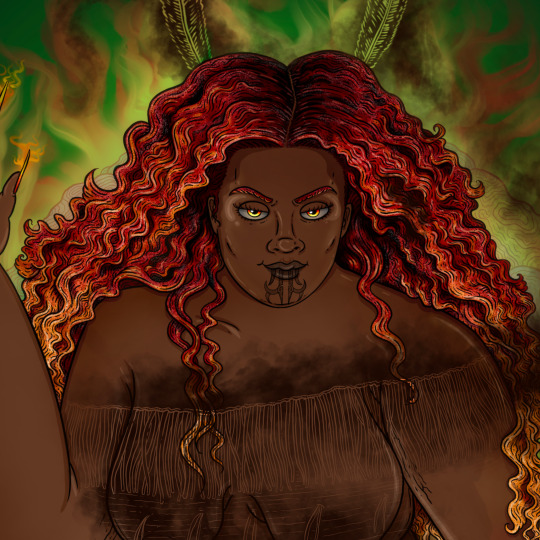
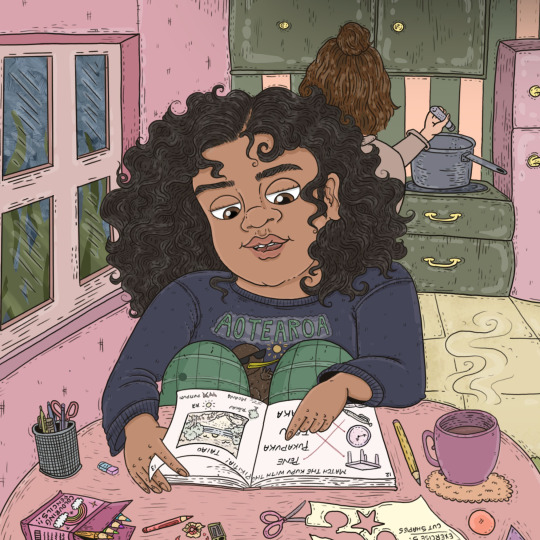
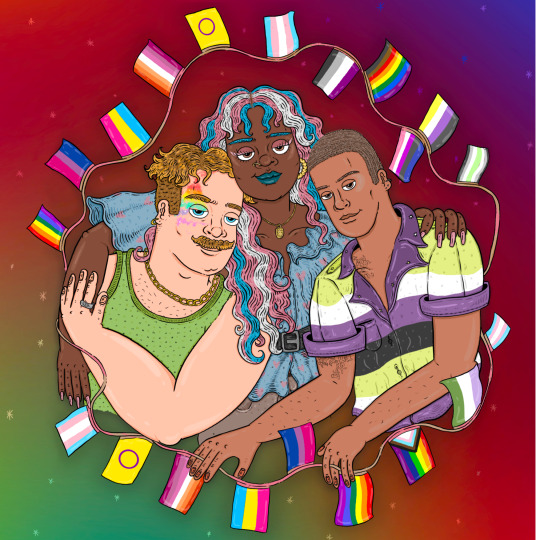

Under the hood with …Nikki Kennedy, Founder of Taputapu
He mokopuna ahau nō Te Tairawhiti mai i ngā maunga Hikurangi, Makeo me Maunga Haumi. Ko Ngāti Porou, Te Aitanga a Mahaki me Te Whakatōhea ngā iwi. Ko Nikki Kennedy ahau.
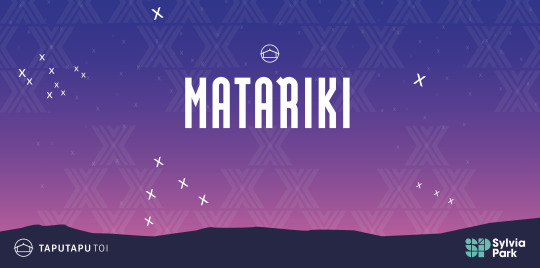
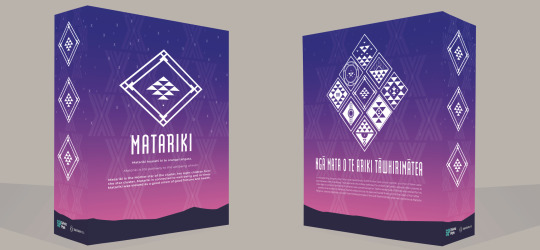
- Aotearoa design and designers showcasing their work in large scale areas such as Sylvia Park mall - showing the large impact and effect that local designers can have.
“Now that the project has finished we will be installing the artwork on Monday 3rd of July and then the public can enjoy our artwork at Sylvia Park. We are working on a variety of brand packages for our clients, that’s our bread and butter mahi. I’m also heading overseas to share about our Matariki artwork at a Thailand Matariki Gala event which is really exciting to be part of. I will be joining other Māori creatives, carvers and fashion designers to talk about how Matariki influences our design mahi and processes etc.

“Based in Auckland, Seachange are an award-winning design and branding studio—they work from digital design to naming and everything in between. Keeping themselves intentionally small doesn’t stop Seachange creating a big impact—their brands stand out for a whole variety of different reasons. One such brand is Ghost Street Dumplings, a pop-up dumpling, which used the company’s name very literally combined with a cute illustration to create a wonderful, memorable brand.” (Seachange, 2023)

“BrandAid is a brand development and design agency based in Dunedin on New Zealand’s South Island. The award-winning agency’s creative director Luke Johnston has over 19 years experience in the industry—and founded BrandAid 15 years ago. They’ve worked with a huge range of clients, including their home city but it was this reusable packaging for Bay Rd Peanut Butter—which employs striking typefaces to make the look as good as it is for the planet.”


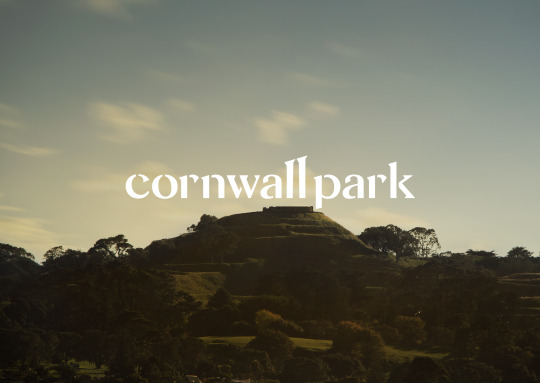



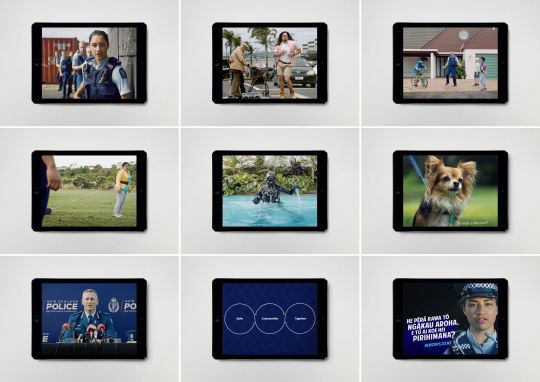
Pohewa Pāhewa: a Māori design kaupapa
1 Jul–3 Sep 2023

Desna Whaanga-Schollum
Connection through exploration and the articulation of cultural identity. Projects see her collaborating with a wide variety of communities, business and design professionals, artists and academics to achieve results which affect change in people, practice and place. Desna is actively involved in Māori identity design, discourse and stakeholder engagement in Aotearoa, via design consultancy, research, exhibitions, wānanga, speaking engagements and governance roles.

“Graphic design is about having visual conversations with people. In order to have a good conversation I need to look people in the eye, I need to listen, and I need to know a bit about the topic at hand. People are smart, they know when you’re faking a smile, so it pays to put your heart into it as much as possible.” - Tyrone Ohio “People of Britomart”

“Graham Tipene (Ngāti Whātua, Ngāti Kahu, Ngāti Hine, Ngāti Haua, Ngāti Manu) is a Tā Moko artist who has been involved as a consultant and key artist on civic and Council-led projects throughout Tāmaki Makaurau Auckland. His public work brings Māori kaupapa into the built environment of the city, with major projects including the Waterview tunnel, Victoria Park, Auckland Library, and Tirohanga Whānui Bridge in Albany.In the latest episode of ‘Cultured Conversations,’ Auckland Art Gallery Director Kirsten Lacy speaks with Graham about Tā Moko and on bringing a Māori lens to civic spaces.”
Johnson Witehira
“My kaupapa (mission) as both an artist and designer is to bring Māori visual culture back into the lives of all Māori. This is done through careful consideration of how indigenous culture, design and technology intersect. We once created all the things in our world; the clothes, buildings, vehicles and tools. Nowadays everything is made for us. If we’re lucky we get to decorate. I want to put Māori back in the drivers seat, so we’re active participants in creating the tools and the world we want to live in.”
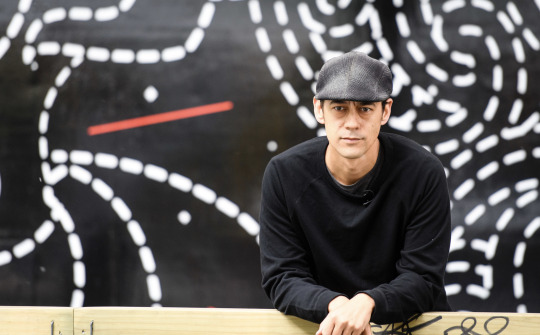
Zoe Black
“Zoe has been with the gallery for two years working across curatorial programming, community development and public programmes. During this time she has made an extraordinary contribution to the organisation, leading Māori programming, alongside extensive work with Moana and migrant communities within a kaupapa of co-leadership. This work now forms a key focus of our exhibition programme.The establishment of this new position is an acknowledgement of Zoe’s leadership, and the expanding work Objectspace continues to undertake nationally. It heralds exciting change for the gallery and their small but mighty team.” Objectspace
0 notes
Text
Dinner Party
In class we had to come up with a list of five creatives we would like to have at a dinner party. There were a series of questions we had to answer for each of these guests.
Who would you include?
What do you like about this person?
Why would you include them?
Which era is this person from?
What themes did this creative person include in their work?
How could you honor them?
When would this event be?
What food would you serve?
Who would they get on with?
Where would this event be?
I Started to answer the questions for each guest but felt it was easier to just write a short passage on each that answers most of the questions
Run Wrake
Run Wrake is a British animator, illustrator and graphic designer. Active from the 1980’s till he passed in 2012. I would like to include Run in my dinner party because I appreciate his attitude and creativity. I enjoy the way he brings classic art and design elements into animation. Run likes to work with loops, Bauhaus design, Constructivism and has themes of mortality, morality and human nature delivered through a surreal lens. Some of Runs work would be projected at a large scale at this event perhaps on the outside of the building. Run would get on with Howie B and Len Lye. Rabbit stew would be served as the main course.
Len Lye
Len Lye is a sculptor and experimental film maker from New Zealand who was active from the 1920’s till the 1970’s. Len is included in my dinner party because he helped shine a light on art work from cultures that normally would not get exposure. Within the world of experimental film, he is considered a pioneer. Excellent at capturing pattern and movement another guest with a surrealist vision. I wanted to have both a voice of the past and from NZ that was less contemporary. Len was an admirer of the art of Māori, Aboriginal, Pacific Island and African cultures and incorporated elements into his own work. I would want the lighting at the event to pay homage to Len and have some Kinetic sculptures at the entrance.
Joseph Müller Brockmann
Graphic designer author and educator Joseph is considered one of the key figures of the International Typographic Style and was active from 1936-1996. I wanted to invite Joseph as he has a strong moral compass and I believe his work comes from a genuine place, he wanted to make life better for people. Joseph used simple geometric shapes, minimalism and typography to deliver his messages in an objective way. Favouring truth and functionality. We can have a table setting inspired by Swiss Design. I think Joseph would get on with most guests at the event.
James Holden
James Holden producer dj and label owner. James makes complex and atmospheric music that brings people together. He uses his label to help up and coming artists get their break in a difficult industry. James incorporates elements of Moroccan Gnawa music and tours his live performances all over the world. James would provide the audio structure at the event and will probably find a kindred spirit in Joseph Müller Brockmann
M.I.A
0 notes
Text
Best Places To Visit North Island New Zealand
The North Island of New Zealand is brimming with incredible destinations to explore. Here are some of the best places to visit on the North Island:
Auckland: New Zealand's largest city offers a blend of urban and natural landscapes. Explore the Waitematā Harbour, ascend the Sky Tower for panoramic views, and visit the islands of the Hauraki Gulf.
Rotorua: Known for its geothermal activity and Māori culture, Rotorua offers geysers, hot springs, and traditional cultural performances. Explore the Wai-O-Tapu Thermal Wonderland and indulge in the thermal waters of Polynesian Spa.
Taupo: Located beside Lake Taupo, the town offers a wide range of outdoor activities. Enjoy fishing, take a cruise to see the Māori rock carvings, or experience the adrenaline rush of skydiving or bungee jumping.
Wellington: The capital city of New Zealand is known for its vibrant arts and culture scene. Visit Te Papa Museum, stroll along the waterfront promenade, and ride the historic Wellington Cable Car for panoramic views.
Napier: This charming city on the east coast is renowned for its Art Deco architecture. Explore the streets lined with beautifully restored buildings, visit wineries in the nearby Hawke's Bay region, and relax on the scenic beaches.
These top places to visit on the North Island showcase the diverse beauty, culture, and outdoor adventures that New Zealand has to offer.
Keep Reading
0 notes
Text
Embracing Values, Harmony, and Cultural Legacy: A Masculine Perspective in Aotearoa New Zealand's Arts and Culture Scene
In the diverse cultural landscape of Aotearoa New Zealand, men have the opportunity to redefine masculinity by prioritizing values over external achievements. By drawing inspiration from indigenous wisdom, embracing concepts like Wu Wei, Tao, Tri Hita Karana, and immersing themselves in the transformative power of arts and culture, men can find fulfillment and contribute meaningfully to society. This article explores how men in Aotearoa can honor their values, achieve balance, embrace interconnectedness, and harness the creative force of arts and culture to shape a new narrative of masculinity.
Embracing Cultural Values and Connection to the Land:
In Aotearoa, we deeply respect the cultural heritage of Māori, which guides men to prioritize values over material success. Embracing manaakitanga (hospitality), whanaungatanga (kinship), and kaitiakitanga (guardianship) allows men to cultivate a profound connection with the land and its people. By valuing the environment, supporting indigenous communities, and fostering a sense of belonging, men embody the essence of Aotearoa's cultural identity. Additionally, embracing Tri Hita Karana, a Balinese concept of harmony with nature, society, and the spiritual realm, further enriches their understanding of interconnectedness.
Wu Wei and Balancing Effort with Ease:
The philosophy of Wu Wei, the art of effortless action, resonates deeply with the Kiwi spirit. Men in Aotearoa understand the importance of balancing hard work with embracing life's simplicity. By aligning with Wu Wei, they can channel their efforts into creative pursuits, engaging with arts and culture while staying connected to Aotearoa's stunning landscapes. This harmonious approach allows men to find fulfillment without sacrificing their well-being, contributing to the overall well-being of society.
Embracing the Tao of Creativity:
In Aotearoa's diverse arts community, men have the chance to embrace the Tao and unlock their creative potential. By living in harmony with the creative process, they tap into their authentic expression and connect with the universal flow of creativity. Through mediums like Māori art, visual arts, music, and storytelling, men contribute to Aotearoa's cultural fabric, weaving narratives that reflect their unique experiences and perspectives. Embracing the Tao of creativity enables men to transcend societal expectations, forging their own paths while incorporating the principles of Tri Hita Karana, fostering a holistic understanding of their role within the wider community.
Arts and Culture as Catalysts for Change:
Aotearoa's arts and culture scene provides a platform for men to address social issues and encourage dialogue. By engaging in artistic expression that challenges the status quo, men can use their creativity to advocate for social justice, equality, and inclusivity. Whether through art exhibitions, theater performances, music festivals, or literary works, men actively reshape the narrative and promote a fairer society. Through their creative endeavors, men inspire and ignite positive change in their communities, aligning with the principles of Tri Hita Karana by fostering harmony in their relationships with fellow community members, the environment, and the spiritual realm.
Valuing Sustainable Consumption and Mindful Choices:
In the pursuit of authenticity and conscious living, men in Aotearoa recognize the importance of valuing sustainable consumption and avoiding cheap and unsustainable consumer products. By adopting a mindset that values longevity, craftsmanship, and environmental responsibility, men make mindful choices when it comes to the products they use and the materials they appreciate. This approach supports local artisans, sustainable practices, and minimizes their ecological footprint. By incorporating the principles of Tri Hita Karana into their consumption patterns, men promote harmony with nature and society, fostering a balanced and interconnected relationship with their surroundings.
Conclusion:
In Aotearoa New Zealand, men have the privilege of redefining masculinity by embracing values, Wu Wei, Tao, Tri Hita Karana, and the transformative power of arts and culture. By honoring indigenous wisdom, finding balance through effortless action, unlocking their creative potential, advocating for social change, valuing sustainable consumption, and embracing the interconnectedness of all things, men contribute to the cultural fabric of Aotearoa and inspire future generations. Let us strive to redefine masculinity by embodying the essence of Aotearoa, leaving a cultural legacy grounded in values, nurturing artistic expression, promoting positive social change, and fostering a deep connection with the land. In doing so, we contribute to a society that celebrates diversity, fosters creativity, and leaves a lasting impact for future generations.
0 notes
Text
10 Interesting facts about Kiri Te Kanawa
1. Dame Kiri Te Kanawa in Downton Abbey
On Sunday 6 October 2013, Kiri Te Kanawa makes her name as a Downton star, playing Australian soprano Dame Nellie Melba. She apparently reduced the cast and crew to tears during rehearsals.
2. Kiri Te Kanawa's name
Dame Kiri was born Claire Mary Teresa Rawstron in Gisborne on New Zealand's North Island. She was adopted by Māori parents Thomas and Nell Te Kanawa.
3. Gold record in New Zealand
She's one of New Zealand's finest musical exports: her recording of the Nuns' Chorus from the Strauss operetta Casanova was the country's first gold record.
4. No audition required
Dame Kiri impressed the London Opera Centre in 1966 - so much so, that she enrolled without an audition to study under Vera Rózsa and James Robertson. Her teachers noticed her gift for captivating audiences, despite her initial lack of technique.
5. Countess at Covent Garden
Dame Kiri was offered the role of the Countess in The Marriage of Figaro at Covent Garden in 1971, after a wildly successful audition. Conductor Sir Colin Davis said: "I couldn't believe my ears. I've taken thousands of auditions, but it was such a fantastically beautiful voice."
6. Royal wedding singer
Dame Kiri performed Handel's Let the Bright Seraphim at the wedding of Charles, Prince of Wales, and Lady Diana Spencer in 1981.
7. Honorary degrees
Dame Kiri's received honorary degrees from the universities of Bath, Cambridge, Dundee, Durham, Nottingham, Oxford, Sunderland, and Warwick. She's also quite the international honorary academic, with further degrees from the universities of Chicago, Auckland and Waikato.
8. Kiri Te Kanawa Foundation
Not only is she a legendary opera star, she's determined to support young singers in their path to greatness. She founded the Kiri Te Kanawa Foundation with the vision "that talented young New Zealand singers and musicians with complete dedication to their art may receive judicious and thoughtful mentoring and support to assist them in realising their dreams."
9. Kiri Te Kanawa's royal audience
Kiri performed at the opening of the Commonwealth Games in 2006, singing Happy Birthday to Her Majesty the Queen herself.
10. Classical BRIT Awards Winners
Honoring her international success, Dame Kiri picked up the Lifetime Achievement Award at the Classical BRIT Awards in 2010. It's just one of a handful of prestigious honours and awards: as well as being made Dame Commander of the Order of the British Empire for services to opera, she scooped a Grammy for Best Opera Recording in 1984 for a disc of Mozart.
0 notes
Text
Meine Meinung zur #Politik der #Regierung in #Deutschland.
Da Ich schon länger glaube die Welt, ist mit mir im Rapport, spiegelt mich, bzw alle ”schlechten ”, ”unzivilisierten ”, ” Machtgierigen ”, ”#dekadenten“ , ” Ungesunden ”, konotierungen in meinem, bzw meinen Namen, interpretiert, als Handlungsanweisung, Regiebuch, nimmt,Dinge zu tun welche das Gegenteil legal, gut sind.
Falls meine Theorie stimmt, das #Welt mit mir im #Rapport ist, mich spiegelt, dann habe Ich vielleicht jetzt mit dieser Natürlichen Kunst Performance die Möglichkeit die Welt ins gute Zuführen.
Seit Ich Mitte der 90er Jahre eine Website habe, wollte Ich so etwas hier in die Richtung veröffentlichen. So eine Art Täglichen Kalender mit Photos. Das video ja jetzt nicht wirklich 123 Siebzigerjahre Impro Theater.
Das #Kunstwerk, das #Gemälde hier im Bild ist 2000 gemalt, und 2001 im #Kunstverein Semikolon in #Bonn Witterschlick am 9. oder 10. September das erstemal ausgestellt worden.
Am 11. September 2001, bin Ich dann über Bangkok, nach Neuseeland, und Australien zu einer 1 Monatigen Arbeits, Mal, und #Ausstellungreise gereist.
In Auckland hatte Ich was mit einer Biofrau, einer bbw, bzw sbbw, Māori, S3ggsworkerin, und in Sydney ein paar Wochen später mit einer Ts Asiatin, auch S3ggsworkerin.
Das Badezimmer hier ist in meiner #Atelier #Galerie, und ist nur deswegen so aufgeräumt weil Die Frauen welche mit mir befreundet sind, mir essen bringen.
Mich abholen um mit mir zu #wandern #Sportmachen, und was unternehmen es irgendwo auch mal nach ihren Frauen Standards sauber haben wollen.
Ich mach maximal Besen rein sauber, sowie die #Saloons, und Häuser im Wilden Westen ( Italo Western).
Der Dolch in meiner Hand, ist vom #Heer. Geschenk von Freunden an mich. Ich habe übrigens groß gemacht. Zu sein wie #Mann ist, real, wirklich Zu sein ist übrigens ein #Akt der #Rebellion, in einer Welt wo nur Gelogen wird, die Leute ihre #Meinung nicht sagen, Etc.
Meine #Sammler, Reiche #Kunstinvestoren, und alle Menschen überhaupt müssen alle auf Klo. #SEAK #ClausWinkler #redpill #mgtow #SEAKClausWinkler #wirdienenDeutschland #ErhebteuchalsRitter
0 notes